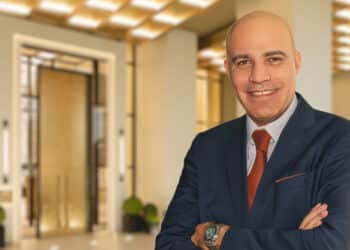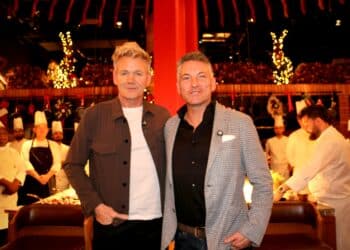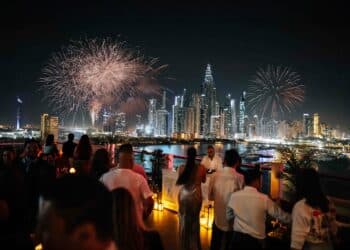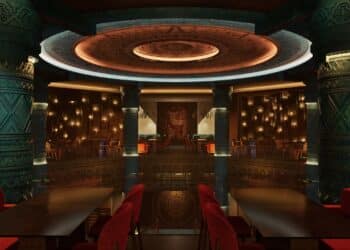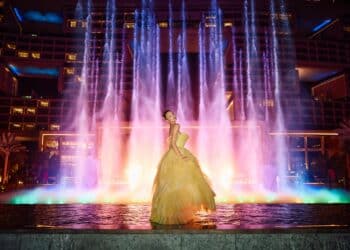Uniforms in hotels can often become the reflection of a brand, speaking volumes about the hotel’s identity and perceived image. This month Hotel News ME hears from a group of leading uniform suppliers on why uniforms help set the tone and create a feeling of equality and a sense of belonging amongst employees.

Uniforms reveal a tremendous amount about an organisation, they communicate to customers an image of professionalism and reliability. Though uniforms play an important role in influencing customer expectations, one element that is often forgotten is how uniforms heavily influence employees as well. Research in the hospitality and service industries show that employees who enjoy wearing their uniforms had higher self-perceptions of job performance, better attitudes about their work, and higher levels of job satisfaction. Likewise, employees who disliked their uniforms had lower levels of job satisfaction and levels of employee satisfaction directly correlate with customer satisfaction. In short, well-designed uniforms can build employee self-confidence and morale. In particular, studies show that employees believe that their credibility increases while wearing a formal style uniform, making them far more confident and professional while interacting with customers. This translates to better service, and in turn positively affects a company’s long-term profitability. It is what researchers call the ‘Apple Store Effect.’ When managers and employees feel connected to the company, they exhibit higher levels of loyalty and commitment to the job, which translates to better customer connections.
The suppliers:
Gavin Dodd, managing director, A. Ronai
Debbie Leon, managing director, Fashionizer Couture Uniforms and Fashionizer Spa
Deborah Abdelrahman, business development manager, Onform Premium Uniform Collections
Nameer Alam, senior marketing manager, TSI Apparel
What are some of the latest design trends for uniforms within the hospitality industry?
Dodd: Over the past 12 months we’ve seen many customers move to simpler styles, especially in F&B outlets, basic trousers and shirts can be enhanced with modern aprons to give a stylish twist.
Leon: We are seeing a move towards more fitted styles, especially in men’s uniforms. This is driven by fashion trends, and carries its own sets of challenges especially for the more physical job roles. We are increasingly being asked to provide shoes as part of a uniform set, as the hospitality industry is looking for a complete look – literally from head to toe as style options for uniforms become more diverse the look does not always lend itself to one shoe style.
Abdelrahman: Since the inception of Onform Premium Uniform Collections in 2015 we have made it our mission to inspire the hospitality and catering industry in the region in the ways of fashion infused uniforms! With our own in-house European fashion design team, we have made it our mission to bring in trends such as geometric shaping and custom designed prints into some of the finest 5-star hotels in the region.
Alam: The latest uniform design trends within the hospitality industry include an increased focus on customised fit, high durability, as well as several fashionable updates such as colour combinations. Black is less in demand while shades of gray and navy blue are growing in popularity. These colours can be paired alongside other neutrals, or can be paired with a bright contrasting colour that fits with the hotel’s branding. Quality is more important than ever, which is evident from the look of any big hotel’s uniform apparel that actually looks like it’s from the retail shelves.
Why is it important for a hotel to have uniforms for different departments?
Dodd: Individual identity is very important for hotels here in the Middle East, they want to stand out from the competition and be noticed. Having a range of garments in their properties helps to give them that point of difference. Nonetheless, some consistency of style is also just as important.
Leon: Each job role has a different function, and on a practical level, the uniforms need to work for the wearer and the department. Housekeeping staff have very different requirements to front office and their uniforms need to be designed accordingly. Not every job title within a department needs to have its own uniform, though. It is important that managers are distinguishable. We would always discourage clients from choosing separate uniforms for job roles within the staffing hierarchy as this has a significant impact on operational costs.

Abdelrahman: It is imperative for a hotel to have a signature style of their own but this is not to say that you shouldn’t, and can’t still have a clear point of difference between departments. At Onform we offer our clients a comprehensive design consultancy service for this purpose; to enable us to create a full collection of uniform for a hotel, which not only complements each other but also allows for easy identification between departments. Benefiting not only the hotel guests but in addition empowers staff though individuality.
Alam: Hotels must have different uniforms for different departments as it helps with the identification of personnel, both among the staff and the guests. Moreover, each department has its own unique needs depending on the amount of interaction with customers, daily wear and tear probabilities and so on. All of those factors call for different types of fabric and levels of customization.
How do uniforms help create a brand identity for a hotel?
Dodd: Uniforms help to reinforce both brand identity and ambiance within a venue. A lot of time, thought and money goes into the interior design of a property and a good uniform should work with that to complete the overall aesthetics.
Leon: Uniforms are an inherent part of a hotel’s brand identity. The colour and style of garments are the more obvious aspects, as it is important that uniforms compliment the environment and interior design of the property, but the details of a uniform can communicate some of the subtler aspects of a hotel’s brand. Accessories can create a total look, and details such as belts and hats can contribute to the overall impression.
Abdelrahman: One of my favorite analogy’s which I like to remind hoteliers is when your guests walk in through the main entrance and lobby of your hotel, what do they see first? A big shinny logo or a well-groomed concierge welcoming them to the hotel? Investing in conceptual, well made uniforms for an establishment is as important as the staff chosen to wear them, staff are the ambassadors of the brand.
Alam: A professional image is crucial and the right uniform can set the stage for a positive first impression. Staff members who feel confident and professional in their uniforms are likely to provide a better service and are more conscious of their actions. Consistent branding with special focus on logos as well as colour schemes makes a hotel instantly recognisable as guests begin to associate the logo and colours used with the brand, creating a sense of familiarity.
What are some of the latest uniform styles for the hospitality industry and where do these styles originate from?
Leon: Workplace style in general has become more casual over the years and there is now greater room to be creative and individual at work. Hotels and resorts are now starting to reflect that and are opting for a more relaxed look for their staff.
Dodd: Styles and influences crossover from the retail fashion arena into hospitality uniforms especially if they prove to be popular and move from season to season. We’ve seen a gradual rise in the adoption of ‘hipster’ styles including skinny fits, braces, Granddad collars, checked patterns, textured weaves and denim fabrics all of which have risen in popularity.
Abdelrahman: Recently we have found that a lot of hoteliers are leaning towards a slightly more informal approach to their uniform, ditching ties for front of house and hats for back of house, instead opting for more contemporary cuts and fashion infused styling.
Alam: In recent years, uniform styles across the hospitality industry have become less formal and in favour of garments that reflect the local culture. This trend has come out of the necessity of standing out and being proud of the land’s own heritage and culture.
What are some of the key materials used for uniforms dependent on departments?
Dodd: We use a variety of fabrics, all of which are specially developed for the corporate-wear market. We source our fabrics through leading textile companies who not only provide us with materials that are fit for purpose, but also offer us continuity for future orders. Our designer has been working with some of our mills for over 20 years. A lot of ‘retail’ fabrics don’t work for corporate or workwear as they don’t stand up to the laundering processes that uniforms have to endure. We use a lot of textiles created using both man-made and natural yarns, these fabrics offer a perfect balance between wearer comfort and garment longevity. The natural yarns offer comfort, while the man-made yarns help reduce shrinkage and colour loss that are often unavoidable when you use fabrics made from 100% natural fibres.
Leon: At Fashionizer we champion natural fabrics – especially cotton and wool and their respective blends because they are more comfortable to wear and more adaptable to environmental temperatures. Cotton, for example, is cool in warm weather and warm in cooler environments. It is important that the fabrics used work in the environment they are to be worn. We also use fabrics that contain Lycra for jobs that require a significant amount of bending and stretching. Fabric finishes can add a lot to the functionality and maintenance of a uniform. We use a range of finishes, from non-iron and soil-release to an antibacterial treatment.
Abdelrahman: Regionally poly-cotton twills are commonly used for most back of house uniforms as it is more durable and retains its colour fastness. What hoteliers are finding though is due to high regional temperatures the predominant polyester content poses a problem to their staff in that it is less breathable. At Onform we have partnered up with reputable European fabric suppliers to enable us to offer specialist bleach resistant, cotton rich twill to combat this problem, the fabric is equally as durable and twice as breathable. 
Another example of the importance of appropriate fabric usage is for female suiting. Hoteliers are commonly offered the same poly-cotton or poly-viscose suiting as that offered for their men’s uniforms. At Onform we favor poly-cotton and spandex blended suiting for the ladies to ensure the uniforms offer not only longevity but also comfort and a perfect fit over every curve!
Alam: Each department has its own special requirements based on the type of work being done. While all the departments have to be consistent in their branding and core design elements, it is the fabric that is key here. Front-end staff require wrinkle-resistant fabrics. Jobs of engineering and maintenance staff are often physically demanding, so they need more durable uniforms designed to perform in their work environment while maintaining a professional image. Generally speaking, few of the most common materials include polyester, viscose, canvas, twill, weave and poly cotton twill. Poly viscose fabrics have high durability in terms of colour fastness, shrinkage and appearance. So, they are mostly used in housekeeping and for waiting staff. Blended cotton fabrics are mostly used for kitchen staff uniforms. The front desk staff uniforms mostly have poly wool for their suits.
How often should uniforms be replaced?
Dodd: We would suggest that as long as a sensible allocation is given and it’s laundered correctly a uniform should last between 12-18 months. Obviously it’s down to individual managers to monitor wear and tear, to ensure that garments are being worn and washed correctly and eventually replaced when they reach the end of their lifespan.
Leon: Replacement timings depend on the garment, the climate they are worn in, how many garment sets are issued per person and most importantly the quality of the laundering process. There are many challenges in this regard in the Middle East, due to the high ambient temperature of the water and the challenges of working in a very hot environment, which requires very frequent washing of garments.
Abdelrahman: This really depends on a number of variables; how many sets each staff member is supplied with to begin with and how many washes each uniform is subject to on a monthly basis. To ensure a professional, well-groomed staff throughout the year we recommend bi-annual re-ordering, and three sets per person in each order for full time staff.
Alam: The uniform is the most upfront representation of a hotel, so it must be neat, clean and of proper fit. For the hospitality industry, I would say that a uniform should be replaced every 3-6 months to maintain its peak look and feel. The fitting is an essential part of uniforms and if the wearer’s body changes, then the uniform should be replaced with a new and updated fitting. If the uniform’s color shade gets slightly faded, then it must be replaced with the new one. Ideally, uniforms must be replaced whenever there is a fitting issue, fabric issue or colour fading.
What factors should hoteliers look for when purchasing uniforms?
Dodd: There are many factors that a hotel should look at when purchasing uniforms, all of which are uppermost in our thought process when designing and developing our garments. Beyond the actual design, the practicality of the garments is important, not only should they be comfortable to wear but they also need to be able to withstand the rigors of everyday wear and laundering. Continuity of supply also needs to be considered, as the hotel needs to be sure that when they place any future orders the style and colours are consistent with the original supply.
Leon: We would always say that quality is key. Uniforms that are well designed, using good quality fabrics and manufactured to a high standard will look good for longer and will have greater longevity, so although they may cost more initially they will prove cost effective in the long run.
Abdelrahman: Hoteliers should prioritise; custom design, quality fabrics and impeccable tailoring. Two of these three elements cannot exist without the third in achieving a high standard of uniform. In addition, I would recommend hoteliers to plan ahead, perfection takes time, care and attention!
Alam: The procuring team should be focused on the fabric material first whilst looking for high quality materials with a comfort finishing, a soft feeling and breathable fabric. Other points to consider are shrinkage behavior in the fabrics and pilling issue. Stitching details and quality is another aspect, which can serve the look as well as have functional benefits. Raw materials used for buttons, collar fusing and zipper, should be given special attention, as usage of higher quality can eliminate a lot of issues that can be caused very early in the wearing cycle.


